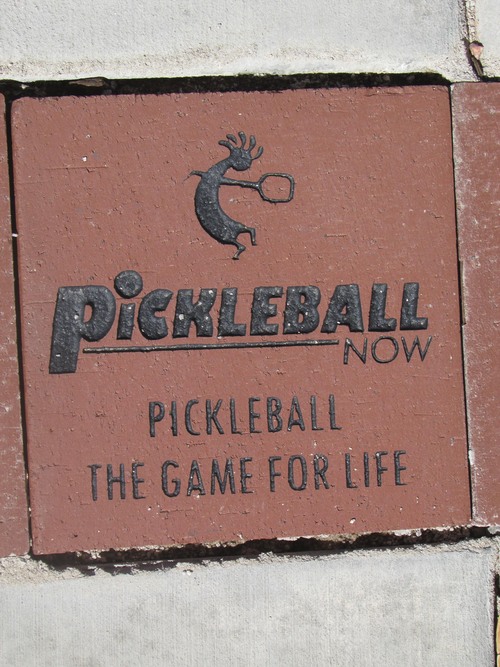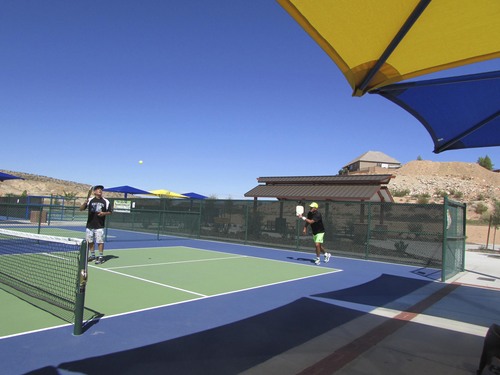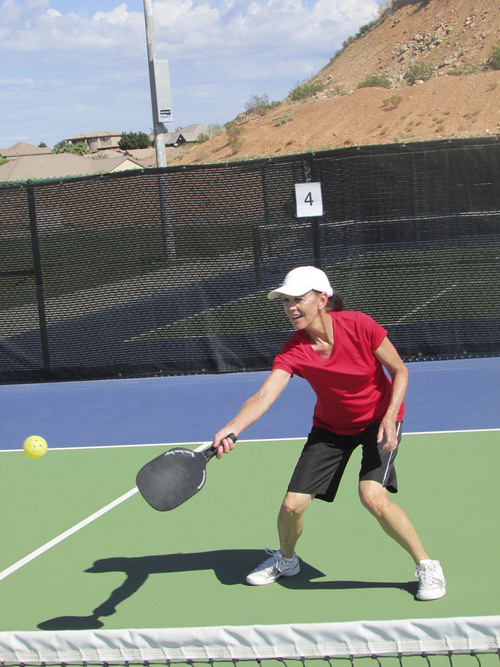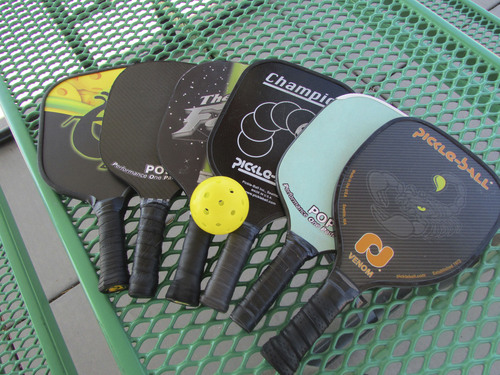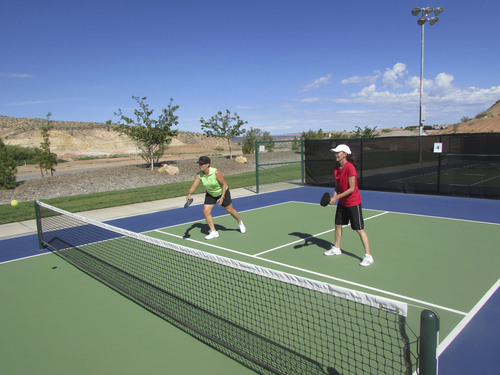This is an archived article that was published on sltrib.com in 2013, and information in the article may be outdated. It is provided only for personal research purposes and may not be reprinted.
St. George • It has no Wimbledon, no Nadal, no ESPN highlights.
But it has, like its tennis cousin, nets and baselines, serves and volleys, young players and old.
Oh, and it has a silly name. But don't be fooled. Pickleball is seeing serious growth, especially in retirement havens such as St. George.
The city recently opened a dozen courts at Little Valley, and the Huntsman World Senior Games, scheduled to kick off Oct. 7, has filled its 525 player slots, making pickleball the largest single-person sport at the two-week event.
St. George resident Bob Klarich, the Games' pickleball director, said the sport has been spreading in southwestern Utah for about a decade. "People caught on," he said, "and realized what a great sport it was."
A blend of tennis, badminton and pingpong, pickleball got its start, according to USA Pickleball, the sport's governing body, in 1965, when Joel Pritchard, a congressman from the Seattle area, and his friend Bill Bell came home to Bainbridge Island to find their families sitting around with nothing to do.
The men noticed an old badminton court but couldn't find a full set of rackets, so they improvised. They created four wood paddles, lowered the net and used an old plastic wiffle ball.
"The Pritchards had a cocker spaniel names Pickles, who became interested in the new game," reads the usapa.org website. "Whenever a ball would come his way, he would take the ball and run off with it because, you see, it was Pickles' ball. And that is how the game got its name."
Some, however, maintain the dog got its name from the sport — not the other way around. Either way, pickleball is booming because it's relatively simple to pick up, cheap to play and easy on the bones.
Take Klarich, for example. He has had two knees and two hips replaced as well as a rotator cuff repaired.
"This sport got popular quickly with senior citizens who had blown out knees or shoulders playing tennis," said Di Shanklin of Ivins. "You can get an active, good workout and not the wear and tear."
Shanklin recently joined friends Marilyn Evans and Denise Allen for a game at the Little Valley complex, which includes 12 courts, restrooms, covered picnic tables and shaded benches. As many as 20 people will wait for a turn to play on some days.
"The pickleball community has doubled since we built these courts," Evans said.
St. George hopes to expand the complex to 24 courts, enough to stage a national tournament.
As for out-of-pocket cost, paddles run $30 to $80 and balls go for about $2 apiece.
"All you need to do is get yourself a paddle, and you are ready to go," Allen said. "People come out in street clothes and play in Levi's."
Chris Beckstead, St. George's recreation center coordinator, said pickleball popped up on the city's radar a few years ago, and the parks department decided the sport needed a complex.
"That's one of the finest complexes in the country," he said about the Little Valley facility.
"It's unreal how much use those courts are getting. It's hard to go out in the morning or evening and find a court that is not in use."
Wayne Bullock, who serves as the city's tennis and pickleball professional, offers private lessons and classes. Pickleball rules
• The serve must be hit underhand. Each team must play its first shot off the bounce. After the ball has bounced once on each side, both teams either can volley the ball in the air or play it off the bounce.
• The nonvolley zone is the 7-foot zone on each side of the net. No volleying is permitted within the nonvolley zone.
• Both players on the serving team are allowed to serve, and a team scores points only when serving. A game is played to 11 points, and a team must win by 2. Rallies are lost by failing to return the ball in bounds to the opponent's court before the second bounce, volleying the ball in the nonvolley zone or violating the double-bounce rule.
• The server must keep both feet behind the baseline with at least one foot on the court surface at the time the ball is struck. The serve is made diagonally cross court and must clear the nonvolley zone.
• When the serving team wins a point, the server moves to the other side of the serving team's court.
Source: USA Pickleball Association


